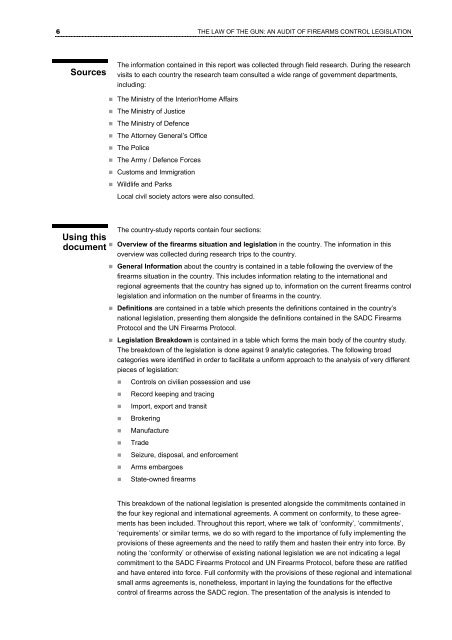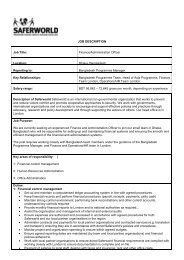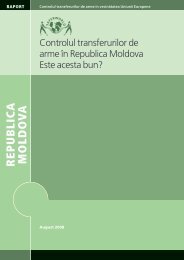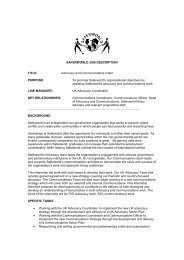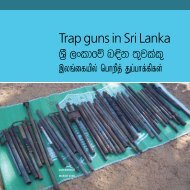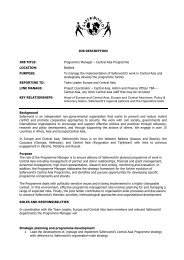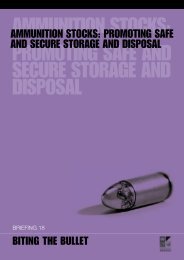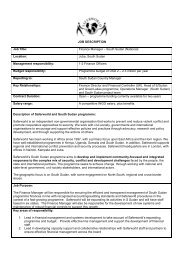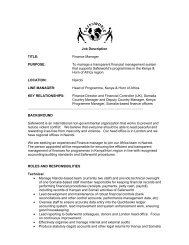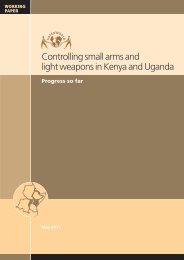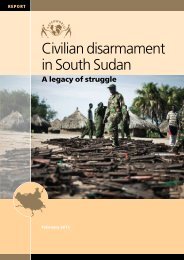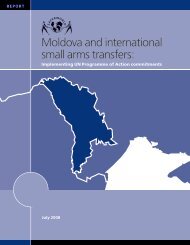Mauritius - Saferworld
Mauritius - Saferworld
Mauritius - Saferworld
You also want an ePaper? Increase the reach of your titles
YUMPU automatically turns print PDFs into web optimized ePapers that Google loves.
6 THE LAW OF THE GUN: AN AUDIT OF FIREARMS CONTROL LEGISLATION<br />
Sources<br />
The information contained in this report was collected through field research. During the research<br />
visits to each country the research team consulted a wide range of government departments,<br />
including:<br />
• The Ministry of the Interior/Home Affairs<br />
• The Ministry of Justice<br />
• The Ministry of Defence<br />
• The Attorney General’s Office<br />
• The Police<br />
• The Army / Defence Forces<br />
• Customs and Immigration<br />
• Wildlife and Parks<br />
Local civil society actors were also consulted.<br />
Using this<br />
document<br />
The country-study reports contain four sections:<br />
• Overview of the firearms situation and legislation in the country. The information in this<br />
overview was collected during research trips to the country.<br />
• General Information about the country is contained in a table following the overview of the<br />
firearms situation in the country. This includes information relating to the international and<br />
regional agreements that the country has signed up to, information on the current firearms control<br />
legislation and information on the number of firearms in the country.<br />
• Definitions are contained in a table which presents the definitions contained in the country’s<br />
national legislation, presenting them alongside the definitions contained in the SADC Firearms<br />
Protocol and the UN Firearms Protocol.<br />
• Legislation Breakdown is contained in a table which forms the main body of the country study.<br />
The breakdown of the legislation is done against 9 analytic categories. The following broad<br />
categories were identified in order to facilitate a uniform approach to the analysis of very different<br />
pieces of legislation:<br />
• Controls on civilian possession and use<br />
• Record keeping and tracing<br />
• Import, export and transit<br />
• Brokering<br />
• Manufacture<br />
• Trade<br />
• Seizure, disposal, and enforcement<br />
• Arms embargoes<br />
• State-owned firearms<br />
This breakdown of the national legislation is presented alongside the commitments contained in<br />
the four key regional and international agreements. A comment on conformity, to these agreements<br />
has been included. Throughout this report, where we talk of ‘conformity’, ‘commitments’,<br />
‘requirements’ or similar terms, we do so with regard to the importance of fully implementing the<br />
provisions of these agreements and the need to ratify them and hasten their entry into force. By<br />
noting the ‘conformity’ or otherwise of existing national legislation we are not indicating a legal<br />
commitment to the SADC Firearms Protocol and UN Firearms Protocol, before these are ratified<br />
and have entered into force. Full conformity with the provisions of these regional and international<br />
small arms agreements is, nonetheless, important in laying the foundations for the effective<br />
control of firearms across the SADC region. The presentation of the analysis is intended to


